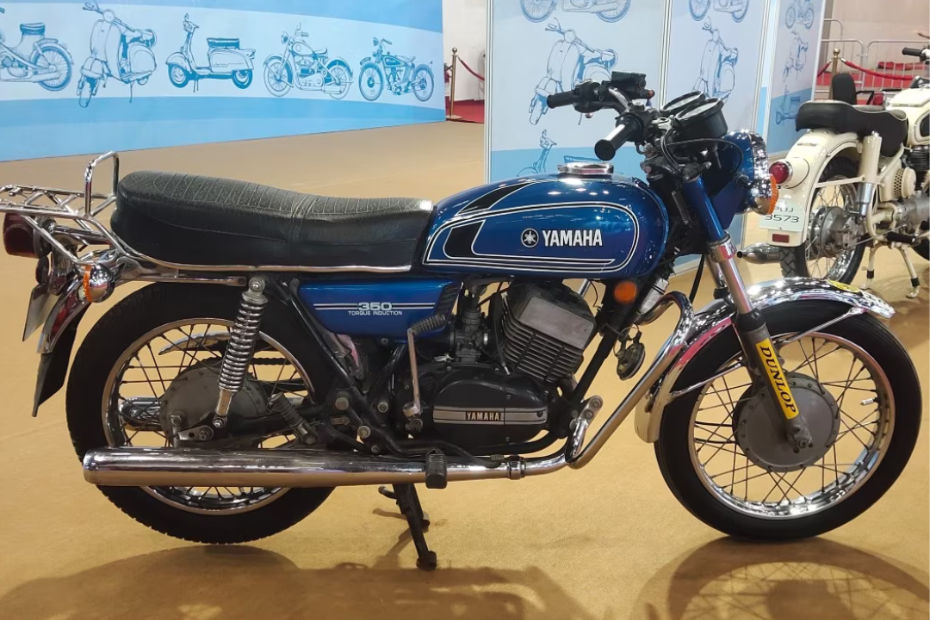The Beginner’s Guide On How To Start Your Two-stroke Journey
Modified On May 21, 2023 10:01 AM By Sudipto Chaudhury for Yamaha RX100
- 5553 Views
- Write a comment
All you need to keep in mind before zeroing on to a two-stroke bike

Ask any seasoned biker what the two-stroke era was, and you’ll get answers peppered with nostalgia. That said, there were quite a few problems too, which don’t seem even valid (or even logical) considering today’s bikes. Besides, the current atmosphere adds some new challenges. So here’s a step-by-step guide preparing you for two-stroke motorcycle ownership:
Picking the right one

Two stroke motorcycles were discontinued with the first round of emissions norms, close to two decades ago. So while most people can simply walk into a showroom and ride out with the motorcycle of their choice, you don’t have that luxury when it comes to two-strokes. Instead, you’ll have to scour the market for a used two-stroke motorcycle. The key phrase to remember: ‘legendary adjacent.’
Right off the bat, you’ll be left flabbergasted by the insane asking prices for some well known bikes. A 25-year-old Suzuki Shogun for Rs 75,000; a 30-year-old Yamaha RX100 for Rs 90,000; a 35-year-old Yamaha RD350 for Rs 4 lakh!
But this is where you need to do your research. Rather than a costly ‘93 RX 100, you could go for a relatively cheaper 97’ RX 135: one more gear, three more PS, same sweet roar!
Documents, documents, documents

Ok so you’ve chosen a bike that seems to be in good condition. Does the previous owner have the documentation too? If not, walk away; the ensuing hassle isn’t worth it.
In most cases, the registration that the previous owner holds will be outdated. Not ideal, but not really a dealbreaker. Depending on when it lapsed, look up the cost of bringing it up to date. In Maharashtra, for instance, the price (including RTO fees and green tax) of re-registering a motorcycle is roughly Rs 2,000 per year, starting from when the registration may have lapsed. Your best bet, then, is to negotiate with the owner and get them to knock off this amount from the asking price. If you succeed, then congrats, you’ve got yourself a steed!
Tempering your expectations

Remember, mobile phones were still a novelty when your bike was new. Hence, you’ll need to get used to the idea of an analogue console (but of course), drum brakes (front and rear, without CBS), an unsettled ride, (anaemic) halogen lighting, no electric start, and of course, lots of smoke!
Moreover, you’ll need to internalise that your bike’s performance is just a smidgen better than today’s commuters. So though the soundtrack may seem like you’re gunning it, you may still be overtaken by the odd Hero Splendor or Honda Activa.
Developing your riding skills

Not to cast aspersions, but modern tech has dulled the average rider’s skills. Many entry-level bikes today boast ABS and a slipper clutch. This – along with the bikes’ linear, predictable power delivery – means you can be borderline negligent and still come away unscathed.
Not so on a ‘stroker: twist the throttle a few degrees and there’s not much progress, a few degrees more and you’re almost flung back. Similarly, a speedbreaker or traffic light, will need you to go down the gears one-by-one while working the throttle, and simultaneously going oh-so-gently on the brakes, all to avoid locking the wheels. Moreover, the lightness of the bike means potholes or the errant stray animals will be avoided even more easily.
The end result, then, will see you using specialist riding skills, such as ‘trail-braking’, ‘rev-matching’, and ‘hook-turning’ as part of your daily commute!
Getting used to working with your hands

Unlike today’s sensor-ridden machines, a completely analogue setup means all you’ll need to fix most issues is a user’s manual (usually a hard copy). Yes, it will be a challenge at first, and your inexperience may even spoil proceedings once in a while. But soon, you’ll be able to diagnose (and fix) small issues – like clutch/brake play, adjusting idle RPM, changing the oil – by yourself.
That said, you’ll do well to check online forums on how to work on your particular two-stroke bike or where to source parts should you need them. The internet has a surprisingly wonderful repository of such knowledge and you’ll generally find fellow two-stroke enthusaists who would be able to lend a helping hand (or wrench).
All this will not only save you a lot of time and money, better spent on riding than at the workshop, but will also do wonders for your mechanical aptitude. And of course, it’ll add volumes to your motorcycling experience.
Develop a deeper bond with your machine

Agreed, by the time this feeling crops up, you’ll no longer be a beginner. But there are still a million things to see, from adventures to broken hearts (and clutch cables). But all through them, you won't regret your decision. Yes, your compatriots on modern machines may be a bit faster, ride a bit smoother, or stop a bit quicker. However, you’ll have the advantage of experience guiding you along as you cover more and more kilometres astride your pride and joy, with full confidence that if something goes wrong, all you need is a small roll of tools and some elbow grease.
And it’s this carefree attitude that best describes the sense of freedom that motorcycles give us, doesn’t it?
